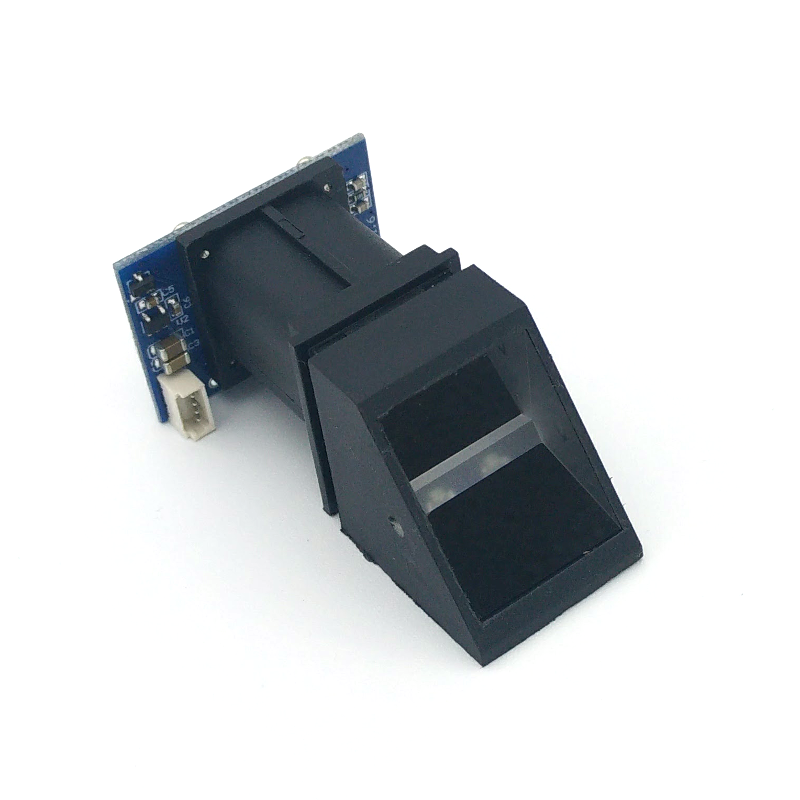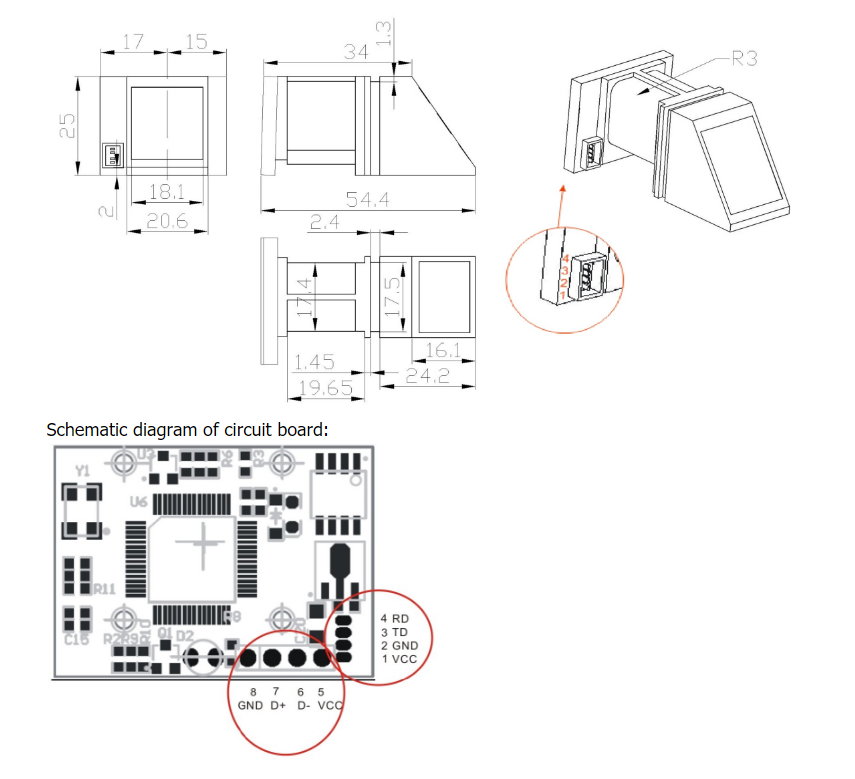
Fingerprint Sensor / Scanner - Optical
Fingerprint recognition is one of the most popular form of biometrics used to verify the identity of individuals. A fingerprint sensor is used to capture the digital image of a fingerprint pattern. It typically captures the fingerprint image, extracting the unique features of the fingerprint and storing a digital template at the time of enrolment and later comparing new image against the stored fingerprint template for verification.
An optical fingerprint sensor uses LED light to illuminate the finger and a type of camera to detect the tiny ridges and valleys of your fingerprint. In general, optical sensors are ideal for devices in public area with high frequency usage. They are more durable and resistant to damage from improper use and vandalism. However, most optical fingerprint sensor is bigger and not as compact as other type of sensors.
This particular model of fingerprint sensor uses serial TTL logic for communication via the 4-pin socket (VCC, GND, TD, RD) on the circuit board. A 4-pin wire harness is included. You can use popular development boards such as Raspberry Pi or Arduino as a controller. You can also connect it to a PC with a TTL to USB converter such as the PL2303TA cable. You can use the Windows demo software that will be provided to test the module, enrol fingerprints and see an image of your fingerprint.
Technical details:
- Power DC : 4.2V-5.0V
- Interface : Serial UART (TTL logical level) / USB 1.1
- Working current : 110mA (typical)
- Peak Current : 150mA
- Matching Mode: 1:1 and 1:N
- Baud rate (9600*N)bps, N=1-12 (default N=6 57600bps)
- Character file size: 256 bytes
- Template size : 512 bytes
- Image acquiring time : <0.5s
- Storage capacity: 980
- Security level : 5 (1, 2, 3, 4, 5(highest))
- False Acceptance Rate (FAR) : <0.001%
- False Rejection Rate (FRR): <1.0%
- Average searching time: < 1s (1:1000)
- Window dimension : 18 mm x 22 mm
Board layout:
Useful material:

